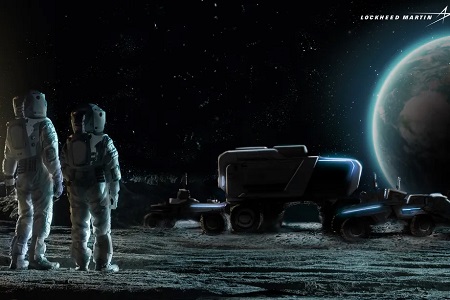
Lockheed Martin and General Motors Co. have teamed up to develop the next generation of lunar vehicles to transport astronauts on the surface of the moon, fundamentally evolving and expanding humanity’s deep-space exploration footprint.
NASA’s Artemis programme is sending humans back to the moon where they will explore and conduct scientific experiments using a variety of rovers. NASA sought industry approaches to develop a Lunar Terrain Vehicle (LTV) that will enable astronauts to explore the lunar surface farther than ever before. The LTV is the first of many types of surface mobility vehicles needed for NASA’s Artemis programme.
To support NASA’s mission, Lockheed Martin and General Motors will develop a vehicle that may allow astronauts to explore the lunar surface in an unprecedented fashion and support discovery in places where humans have never gone before.
Lockheed Martin will lead the team by leveraging its more than 50-year-history of working with NASA on deep-space human and robotic spacecraft, such as NASA’s Orion exploration-class spaceship for Artemis and numerous Mars and planetary spacecraft.
Speaking about the partnership, Rick Ambrose, executive vice president, Lockheed Martin Space, said: “This alliance brings together powerhouse innovation from both companies to make a transformative class of vehicles. Surface mobility is critical to enable and sustain long-term exploration of the lunar surface. These next-generation rovers will dramatically extend the range of astronauts as they perform high-priority science investigation on the Moon that will ultimately impact humanity’s understanding of our place in the solar system.”
GM has a history of working with NASA and manufactured the inertial guidance and navigation systems for the entire Apollo Moon programme. GM also helped develop the electric Apollo LRV that was used on Apollo’s 15-17 missions.
Alan Wexler, senior vice president of Innovation and Growth at General Motors, added: “General Motors made history by applying advanced technologies and engineering to support the Lunar Rover Vehicle that the Apollo 15 astronauts drove on the Moon. Working together with Lockheed Martin and their deep-space exploration expertise, we plan to support American astronauts on the Moon once again.”
Unlike the Apollo rovers that only travelled 4.7 miles (7.6 kilometres) from the landing site, the next-generation lunar vehicles are being designed to traverse significantly farther distances to support the first excursions of the Moon’s south pole, where it is cold and dark with more rugged terrain.
Autonomous, self-driving systems will allow the rovers to prepare for human landings, provide commercial payload services, and enhance the range and utility of scientific payloads and experiments.












Add Comment